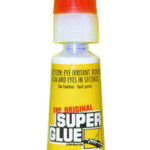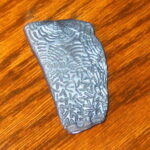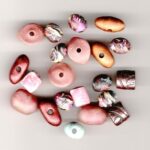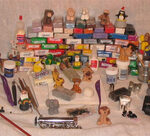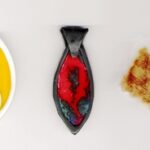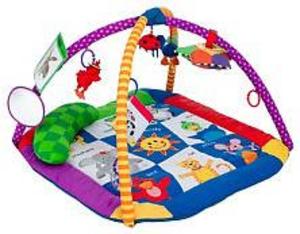The relatively new medium of liquid polymer clay offers design options you can’t get with solid clay. Here are just a few of the many things you can do with it.
Glue
Liquid clay is very good at bonding clay surfaces. This is a great feature, because most glues won’t work with polymer clay; the one exception is cyanoacrylate (super glue), which needs to be handled very carefully. If you’d like to avoid this glue try using liquid polymer clay instead. The liquid clay does need to be cured, of course, but once it is, the individual pieces of the object shouldn’t come apart.
Liquid clay “glue” is especially useful for projects that need to be completed in stages. You can cure, or partially cure, the pieces of your project to keep them from getting damaged in handling. Then you can apply liquid clay and give the object one last trip to the oven to hold the cured pieces together.
Enamel effects
Tinted liquid clay can be used to simulate effects previously created only with enamel, like cloisonné. This is the only kind of polymer clay that you can successfully use oil paints with – because you mix them into the clay. In this way you can tint the clay any color you want. If you’d like to try this, start with a very small amount of clay and a tiny bit of paint; it doesn’t take much to change the color of the clay. If the color isn’t strong enough you can always add more.
Painting and glazing
Liquid clay can be painted onto the surface of an object. If the clay is left clear the object will look glazed after it’s cured. Tinted clay can be used to paint actual designs, whether large or small. For example, you could embellish the side of a vessel with painted flowers.
A few artists have taken this process further and produced actual polymer clay “paintings.” This may sound overwhelming, but remember that the painting doesn’t have to be large. If you want to try it, start small; for example, do a simple design on the surface of a pendant. For your “canvas” you could use a sheet of solid clay; if it’s translucent, some of your painted image will show through the back of the piece, possibly making it reversible.
Laminating
Liquid clay makes a great laminator. If your artwork is on fabric or paper you can preserve it by coating both sides with liquid clay and then curing it. This process also makes it easier to use the piece in a larger work.
When it’s still in the bottle, liquid polymer clay doesn’t seem all tht special; in fact, it tends to look more like white glue than anything else. It can be hard to imagine it as behaving anything like those solid blocks of color you may be used to working with. But it can really enhance your solid clay designs – as well as creating some unique effects of its own.

